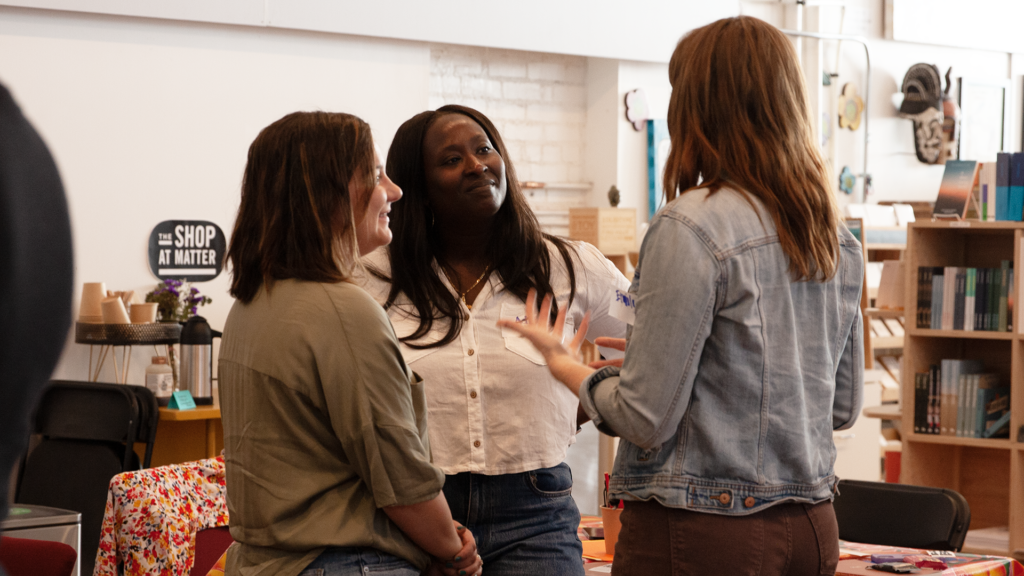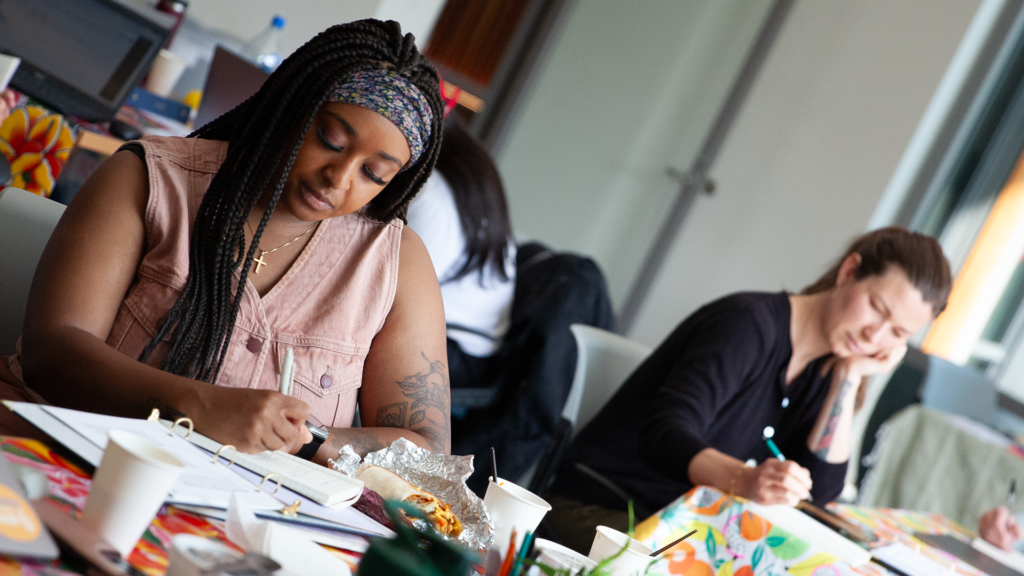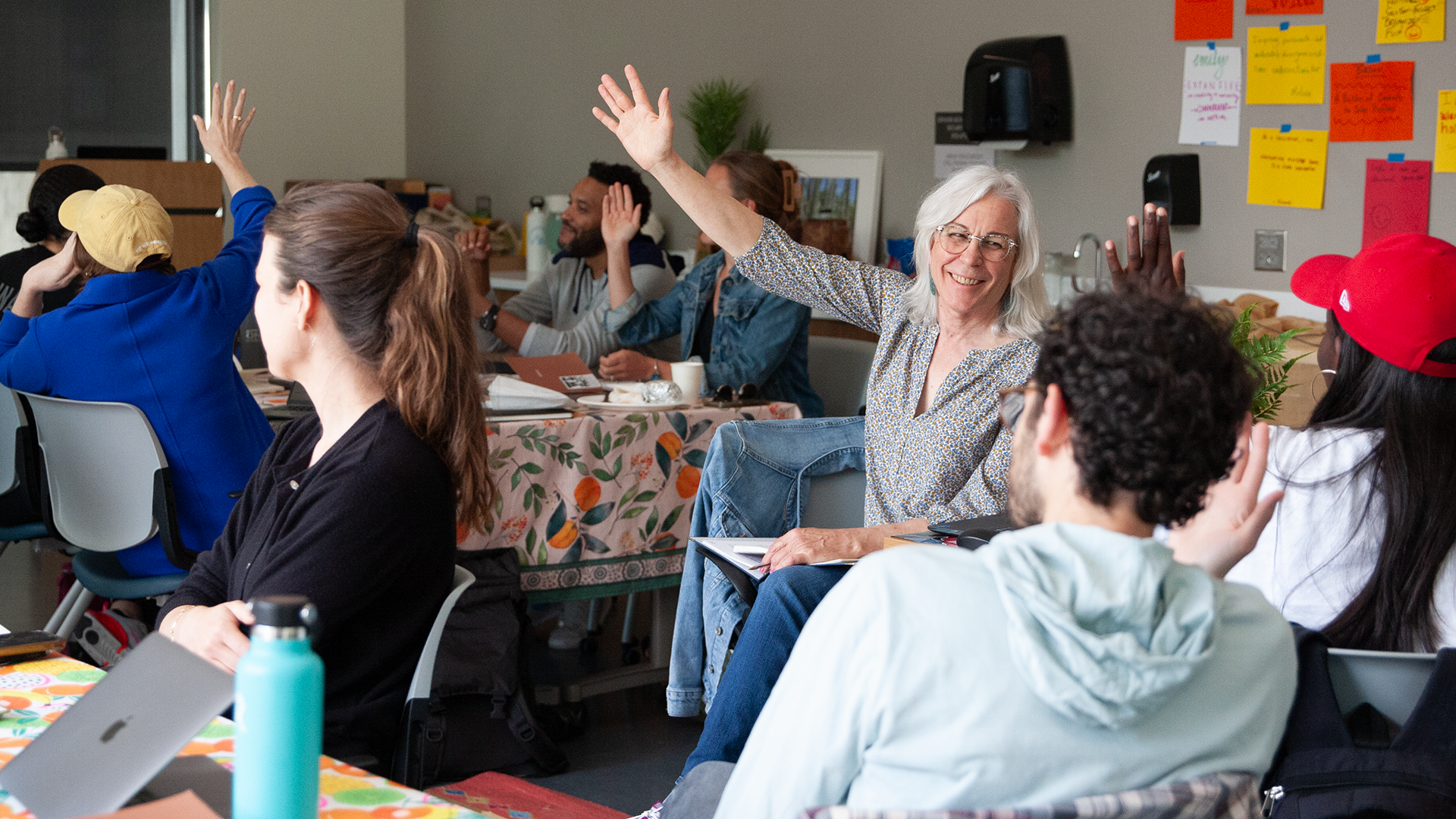Three themes from last month's studio's session.
We’re often asked to share the methods behind the madness here at Franklin Street and it sounds something like this:
“We have a big team retreat coming up. How do we make sure it's substantive and still helps people recharge? How do I strike the balance?”
“Our team has a huge goal to accomplish so we carved out a full 3 days to go deep on it — help!”
“I’m about to facilitate a big strategy sprint for the leadership team and I want to make sure the agenda feels like something I’m uniquely able to lead.”
Last month we set out to answer these tricky questions. We codified our “methods” for the very first time and brought 15 leaders from across sectors together for a 2-day Studio Session. We shared our design tools, provided space, and created a community for them to design experiences that inspire in their own contexts.
Not only that, but each participant brought a real project with them to design during our time together. They brought high-stakes board retreats, team culture reset moments, cohort-based experiences, and more. Over two days, we contemplated how best to design intentionally with learners in mind and prepared and practiced to facilitate those experiences with confidence and authenticity.
During the Studio Session, we spoke with our participants to learn what resonated most. Three themes surfaced during our conversations and we’re offering them now in the form of “advice”. Think of these like three provocations to consider as you design meaningful experiences of your own:
Design in community
Designing in isolation inhibits creativity. Participants at the Studio Session shared that they often design their experiences in a silo without the benefit of collaborators to spark new ideas. Mark Gabriel from Embark reflected on the challenges of working solo, saying, “Most of the time, I sit by myself and I spin on all these ideas in my head. I think [my spinning] is related to this attitude of perfection and wanting to reveal the perfect design.”
There’s often a sense of pressure for facilitators to have all the answers. But in reality, “it’s so important to show vulnerability and ask a peer how to improve my design or a participant how I can make their experience better,” Mark reflected. “The session helped me recognize that there’s a community of thought partners I can lean on to help me and make my work better.”

Balance spaciousness and constraints
Professional gatherings are often tightly scheduled, but the Studio Session emphasized the importance of allowing space for processing. Bianca Van der Meulen from Lean Solopreneur said that the Studio Session, “enabled me to hold a problem without forcing myself or feeling any pressure, so my stuck places untangled themselves. When I try to solve a complicated problem, it's as if the more directly I approach it, the more complex it gets.”
We kicked off the session with a series of prompts for participants to consider like:
- Using no more than 7 words, describe your identity as a facilitator.
- What commitments do you believe are essential to be an effective facilitator?
By reflecting on these questions, participants had space to think more broadly about why they do the work they do. “The Studio Session provided so much space to think gently. It was a low-stakes place for my brain to just be and reflect,” Bianca shared.
Enable your learners to unlock real challenges
Workshops are most powerful when your participants can apply the learning to relevant challenges and projects. To enable your learners to do that, get to know them to understand where they feel stuck in their work. Before the session, we hosted office hours to understand what participants are grappling with. Richard Maez from Ednium said, “the Studio Session was so different because we came with a real product to work on and received real-time feedback from other facilitators.” By making progress on a specific work task, the skills they learn are more likely to stick and will instill a new sense of possibility in how they approach their challenge. “It was inspiring to see professional development done in a new way.” Richard said.

As you reflect on these three provocations, we want to know — what go-to moves would you add to this list for designing experiences that are rooted in a strong purpose? With this first Studio Session under our belt and tons of rich feedback from our participants, we are eager to refine and share our methods with our partners and the Franklin Street community at large. Sign up for our newsletter to get the latest news on upcoming Studio Sessions and for more on our favorite design and facilitation methods!
